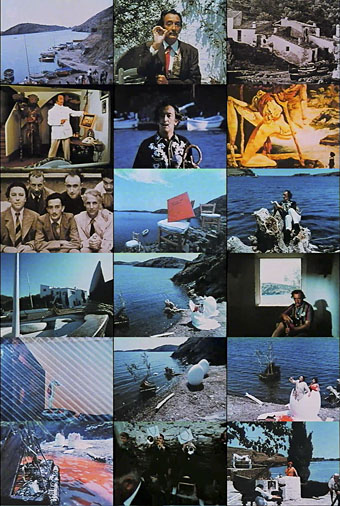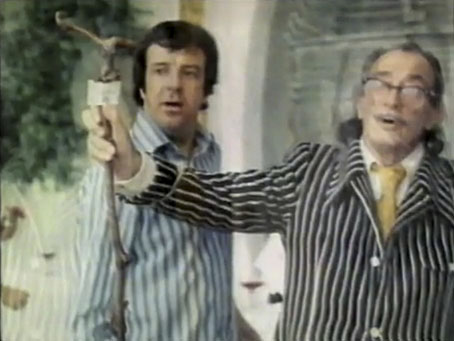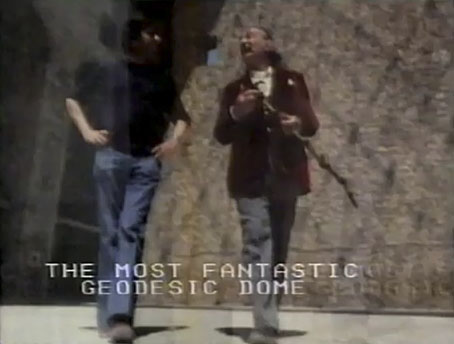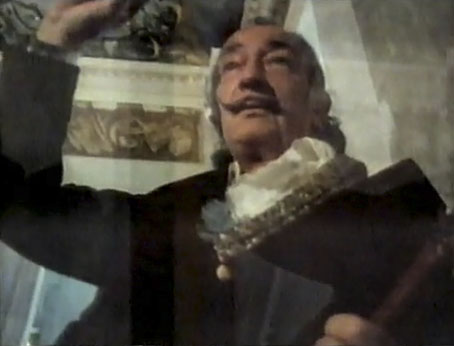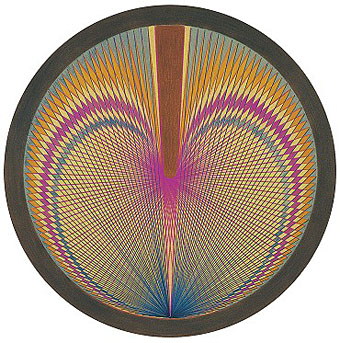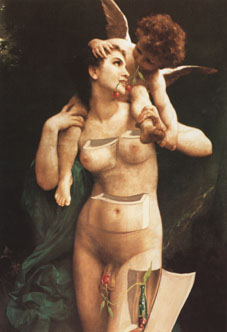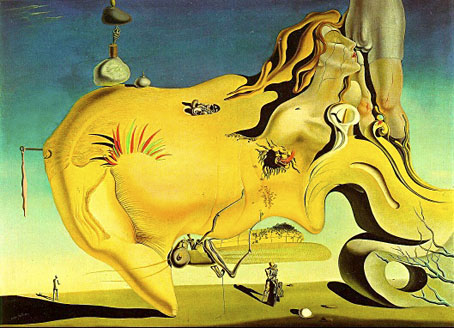Yet another Dalí documentary, Soft Self-Portrait of Salvador Dalí is a welcome arrival at the splendid Ubuweb for its being the source of a number of sequences that turn up in later Dalí documentaries, notably the scenes of the artist and wife Gala emerging from giant eggs, and Dalí clattering away at a piano in which a number of unfortunate cats have been imprisoned. Jean-Christophe Averty is the director, and the narration for the English version is by Orson Welles. Ubuweb gives the date as 1967 but it’s listed as 1970 on IMDB. Whatever the year, it’s certainly the end of the 1960s with Dalí appearing a little more sprightly than in the Russell Harty film. He also appears wearing a shaggy wig out of sympathy for the youth of the day. (We know now that his sympathy for young men and women was more than a cultural interest.) Amid the usual boasting, tantrums and rather tiresome antics the filmmakers manage to come away with a couple of insights: at this point Gala was still appearing in public with Salvador, something she refused to do in later films. And there’s a trip by boat to a rocky coastline which Welles’ narration asserts was the inspiration for a number of the famous paintings. In all, it’s 52 minutes of craziness that’s recommended for anyone interested in Dalí’s art.
See also: Photographer David McCabe’s best shot in which that wig makes an appearance in the presence of another wig-wearing artist.
Previously on { feuilleton }
• Mongolian impressions
• Hello Dali!
• Dalí and the City
• Dalí’s Elephant
• Dalí in Wonderland
• Alejandro Jodorowsky’s Dune
• Dirty Dalí
• Impressions de la Haute Mongolie revisited
• Dalí and Film
• Salvador Dalí’s apocalyptic happening
• Dalí Atomicus
• Impressions de la Haute Mongolie

